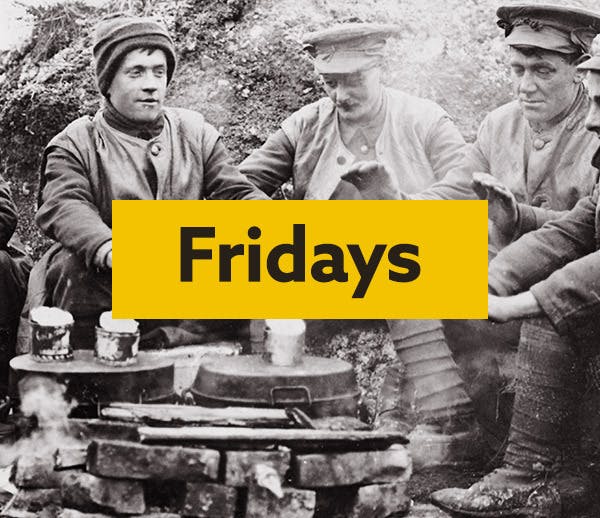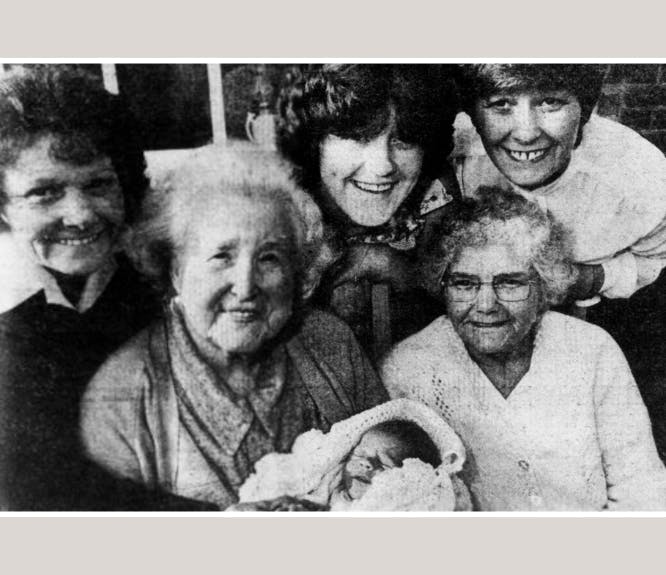Did your ancestors experience the Great Irish Famine?
4-5 minute read
By Niall Cullen | December 17, 2024
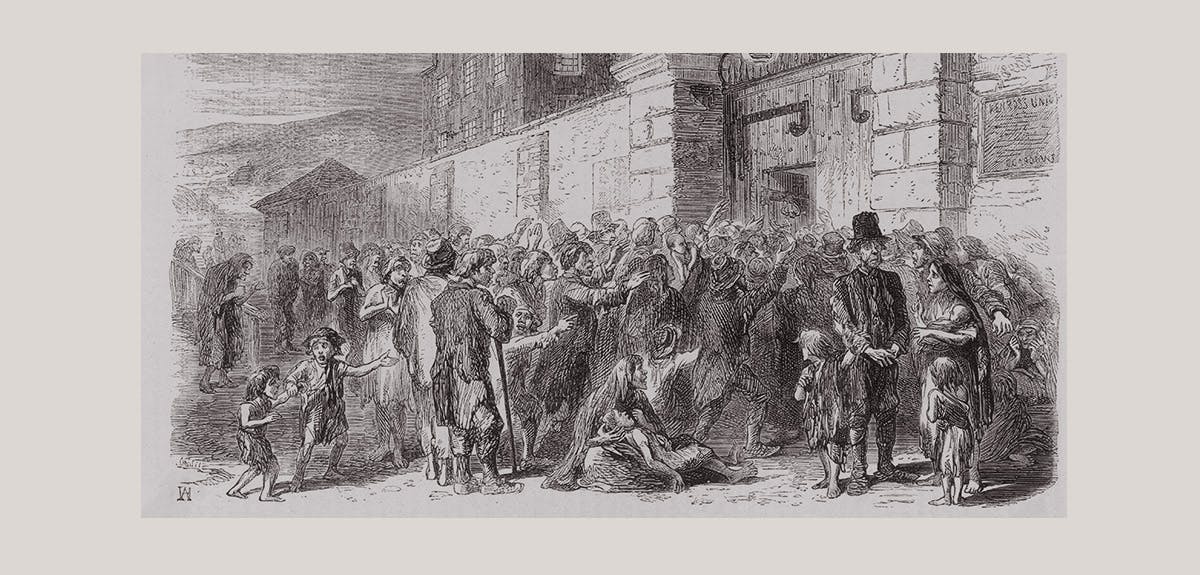
Did your family live through the greatest single tragedy in Ireland’s history? Here’s how to uncover their story.
The year is 1848, and in the rural west of Ireland, two parents face a heart-wrenching decision as a result of the Gorta Mór - The Great Hunger. Watch their five children starve? Or uproot their home, and make an arduous journey to unknown lands?
They had already suffered three years of devastation due to the catastrophic Great Famine, which would kill a quarter of the Irish population between 1845 and 1852.
Faced with starvation and financial ruin, the family makes the difficult decision faced by millions – whether to stay and starve or to emigrate in search of a better life. Over two million Irish people fled the country in the 1840s and 50s. Those who stayed endured brutal suffering.
Search Irish records
Enter a few details to see your family’s records at your fingertips.
Irish families in this period lived through a historical event that fundamentally shaped the nation – and your ancestors were no exception.
Few aspects of life were spared the effects of the Great Irish Famine. The devastating wave of poverty, hunger, disease, death and displacement that came in the wake of the failure of the country's potato crops completely changed Irish society forever.
Understanding their experiences
With the largest collection of Irish family history records online, you can uncover Irish Famine stories and trace the lives of ancestors who lived through it.
With newspapers and crime records, you can understand what life was like in 19th-century Ireland.
Land records reveal the landlord/tenant tensions heightened by the Famine. Life was tough for Ireland’s poorest farming families. Under the conacre system, farmers were frequently evicted or forcibly cleared from the land they rented. However hard they worked to keep these disastrous possibilities at bay, families lived in constant fear of crop failure and starvation.
Migration is another important facet of Ireland’s social history. Our emigration and census records allow you to trace the Irish diaspora across the globe in this period.
You can use these resources to uncover your Irish family story and understand the broader history of the Irish people from British occupation to the Good Friday Agreement.
Poverty Relief Loans 1821-1874
You can discover details of the poorest families in rural Ireland before, during and after the Famine with this fascinating record collection.
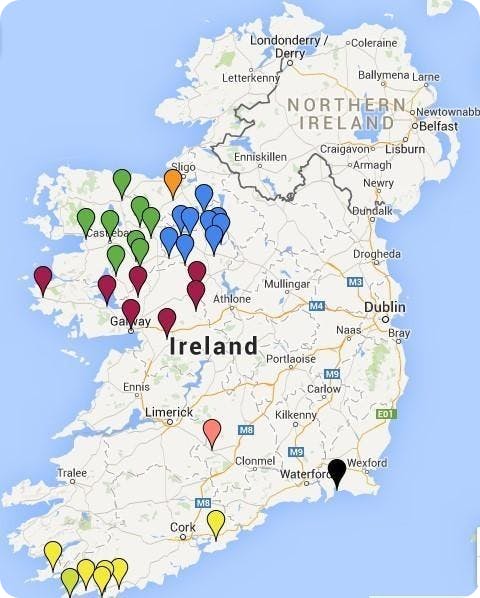
This map shows the geographic coverage of the Poverty Relief Loan records, with a focus on rural areas in the west and south.
Poverty relief loans were given to struggling farmers to help them survive as their crops failed. Despite backbreaking work, men and women used to supporting their families were forced to take out loans to survive – a situation rife with shame and frustration.
The records reveal all sorts of useful family tree information including names, addresses and the names of loan guarantors, witnesses, neighbours and other family members.
Irish Famine Immigrants, 1846-1851
Between 1846 and 1852 almost 1.5 million Irish men, women, and children left their homeland in search of a better life. The Irish Famine Immigrants transcripts list over 420,000 Irish people who disembarked in the United States between 1846 and 1851. Of those, 8,000 were born on board ship and up to 10% of those who originally came aboard are thought to have died at sea.
Our records group together individuals with the same surname who traveled on the same ship, a useful feature as you trace your ancestors forward in US census records.
Workhouse and poor law records
During the Great Famine, Irish workhouses, built to hold up to 100,000 residents and funded by local taxation, were overwhelmed by the sheer numbers of those in need. The records left behind are must-search resources for tracing family who lived through the Famine. Findmypast is home to the most comprehensive collection online.
The following collections offer a detailed insight into the immense socio-economic impact of the Famine on the rural poor:
- Dublin Workhouses Admission & Discharge Registers 1840-1919
- Dublin Poor Law Unions Board Of Guardians Minute Books
- Donegal Workhouses Registers and Minute Books
- Waterford Poor Law Union Board Of Guardians Minute Books
- Galway Poor Law Union Records
- Clare Poor Law Unions Board Of Guardians Minute Books
- Sligo Workhouse Admission and Discharge Registers 1848-1859
Often, you'll discover entire families listed together in workhouse registers. Board of Guardian Minute Books usually include the names of people involved in the running of these overcrowded institutions, so you can understand the full picture.
Newspapers
The Great Famine of the mid-19th century reshaped lives and landscapes. With the largest collection of British and Irish newspapers online, you can delve into personal and communal stories of survival, resistance, and loss.
Newspaper accounts provide a vivid and haunting record of the Famine, often referred to as ‘distress in Ireland.’ These 19th-century publications capture a broad spectrum of experiences, from searing critiques of the government and landlords to heart-wrenching accounts of the suffering endured by millions of labourers and tenant farmers.
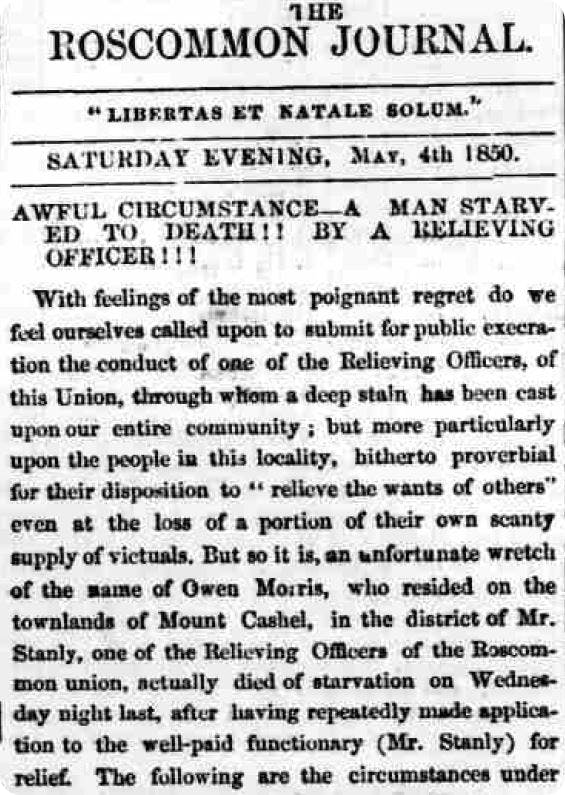
Roscommon Journal, and Western Impartial Reporter, May 4, 1850
The detailed, name-rich reporting style of the era makes these newspapers invaluable to family historians. National papers often relied on local and regional correspondents, preserving community stories that might otherwise have been lost.
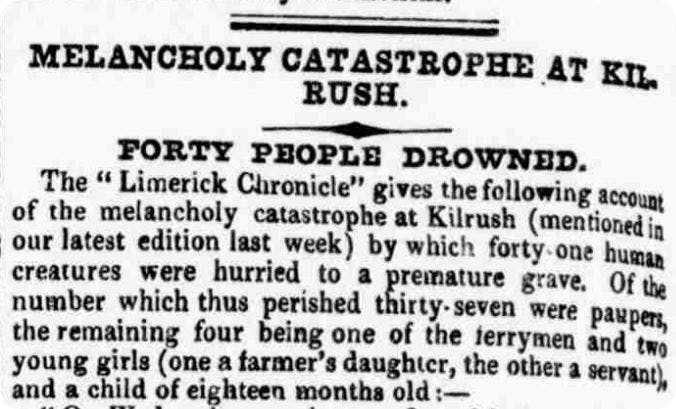
Lloyd's Weekly Newspaper, December 23, 1849
Graphic and often sensationalist, the coverage reveals the harrowing effects of starvation and disease with unflinching detail. While some criticized this approach for exploiting human misery, these reports offer a glimpse into the devastating reality of life during the Famine.
Crime records
Our prison and court records shed light on another pernicious consequence of the Great Famine.
Amidst mass desperation, many people turned to petty crime to feed themselves. In the context of poverty and mass starvation, your very own ancestors may have been driven to steal to feed their families.

Brother and sister, Patrick, aged 11, and Mary Mooney, aged 9, were imprisoned for five days in November 1847 in Galway for ‘asking alms’ (begging).
Some even committed crimes in the hope of being imprisoned, where they would at least be sheltered and fed. Prison rations were kept deliberately low for the first two weeks of imprisonment to discourage people from this drastic course of action.
Others were caught up in the stringent vagrancy laws of the day. Straying too far from home for too long in search of help could result in being imprisoned for up to a month. Being homeless could also see you imprisoned, a cruel twist for those already suffering after eviction.
Illuminating Ireland’s story
The harrowing story of the Great Irish Famine deserves to be preserved and understood. It had a devastating impact on our ancestors’ lives and made waves which rippled through generations on both the individual, communal, national and international levels.
Connecting with our ancestors starts with understanding the world in which they lived. Discover important chapters of history in even more detail via the Findmypast blog.


